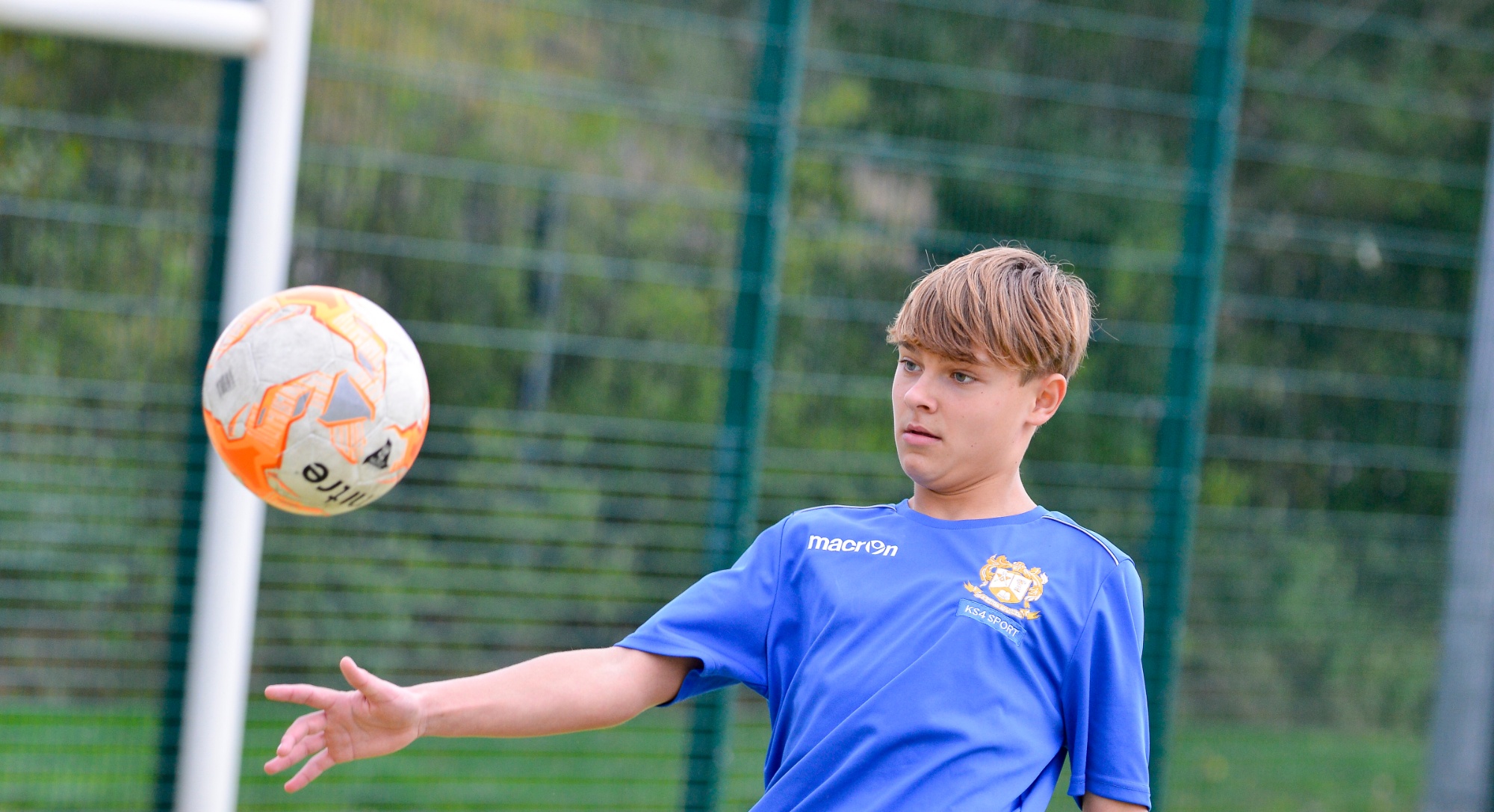The Knowledge and Skills overviews show the specific music content students will learn in each unit of study throughout the year. These documents outline both the substantive knowledge (musical elements, notation, and cultural contexts) and the disciplinary skills (performing, composing, and critical listening) that students will develop. Each unit is broken down to clearly identify what students need to know and what they should be able to do upon completion. Through the systematic development of both knowledge and skills, students build musical literacy, performance confidence, and creative musicianship appropriate to their stage of learning.
Select a unit to find out more...
Rock n' Roll
| Unit Progress Criteria |
| Knowledge |
Skills |
|
The key features of Rock n' Roll music including:
- Typical instrumentation (piano/keyboard, guitar, drums, vocals)
- Basic 4/4 time signature and its relationship to dance styles
- Simple chord progressions used in Rock n' Roll
Basic music theory including:
- Note names on the keyboard from middle C to B
- The layout of white notes on a keyboard
- The difference between playing bass lines and chords
Performance terminology including:
- Unison singing
- Voice projection
- Performance balance
- Basic choreography concepts
Listening vocabulary including:
- Basic musical elements (tempo, dynamics, texture)
- Simple instrument recognition
- Style characteristics of Rock n' Roll
|
Keyboard Skills:
- Locate and play notes from middle C to B on the keyboard
- Perform a bass line with reasonable accuracy and steady pulse
- Play simple chord patterns in a Rock n' Roll style
- More able: Combine bass line and chords using both hands
Vocal Skills:
- Sing Rock n' Roll songs in unison with the class
- Project voice appropriately for the style
- Maintain pitch accuracy through a whole song
- Respond to basic vocal warm-up exercises
- More able: Lead sections of songs confidently
Performance Skills:
- Maintain a steady pulse when performing
- Follow a simple performance structure (ABCCB)
- Perform with awareness of others
- Demonstrate basic choreographed movements while singing
- More able: Perform with consistent fluency and minimal errors
Listening and Appraising Skills:
- Identify key instruments in Rock n' Roll music
- Recognise basic musical elements when listening
- Compare different performances using simple musical vocabulary
- Provide constructive feedback using WWW/EBI format
- More able: Use specific musical terminology in feedback
|
Form and Structure
| Unit Progress Criteria |
| Knowledge |
Skills |
Form and Structure concepts including:
- Definition of musical form/structure
- Understanding of ternary form (A-B-A)
- How structure is used to organize musical ideas
- How structure relates to modern song forms
Basic composition concepts including:
- What makes a successful melody?
- The pentatonic scale and its notes
- How to develop a melody (e.g., through retrograde)
- Different ways sections can contrast with each other
Musical development terminology including:
- Ternary form (A-B-A)
- Extended ternary form (A-B-A-B1-A)
- Melodic development
- Contrast between sections
Listening vocabulary building upon Autumn 1:
- Structure and form terminology
- Recognition of different sections
- Understanding of melodic development
- Identifying contrasts between sections
|
Composition Skills:
- Create a contrasting 'B' section melody using given notes
- Apply basic development techniques to create a 'B1' section
- Structure musical ideas in ternary form
- More able: Add left-hand accompaniment to compositions
Performance Skills:
- Perform given 'A' section with accuracy
- Play their composed 'B' section fluently
- Maintain steady pulse through different sections
- Perform complete ternary form pieces (A-B-A)
- More able: Perform extended ternary form (A-B-A-B1-A)
Development Skills:
- Create contrast between sections
- Apply basic melody development techniques
- Structure ideas logically
- More able: Develop original melodic ideas independently
Listening and Analysis Skills:
- Identify different sections in music by ear
- Recognize ternary form in familiar music
- Compare and contrast different sections
- Use appropriate terminology when discussing structure
- More able: Analyse how melodies are developed between sections
|
Performance Masterclass
| Unit Progress Criteria |
| Knowledge |
Skills |
|
Core Performance Principles including:
- How to select appropriate repertoire for their ability
- The importance of song key and vocal range matching
- The relationship between song choice and performance success
- What makes an engaging performance
Vocal Performance Concepts including:
- Voice projection techniques
- Balance between voices
- Solo and ensemble singing approaches
- Expression and interpretation methods
Performance Enhancement Techniques including:
- Use of dynamics
- Adding vibrato
- Melodic decoration
- Basic choreography principles
Performance Analysis Vocabulary including:
- Accuracy and fluency terminology
- Expression and interpretation terms
- Technical performance vocabulary
- Choreographic terminology
|
Vocal Performance Skills:
- Project voice appropriately for the performance space
- Maintain accurate pitch and rhythm
- Perform with appropriate expression
- Blend with other voices when singing together
- More able: Perform confident solo sections with stylistic awareness
Interpretative Skills:
- Add appropriate dynamic contrast
- Include simple melodic decorations
- Show awareness of original artist's style
- Interpret songs creatively
- More able: Add personal stylistic elements while maintaining musical integrity
Choreography Skills:
- Coordinate simple movements with singing
- Show awareness of stage presence
- Perform choreography in time with music
- Maintain performance focus while moving
- More able: Create and lead choreographic elements
Evaluation Skills:
- Assess their own vocal capabilities realistically
- Select appropriate repertoire for their ability
- Provide constructive feedback using WWW/EBI format
- Analyze performances using specific musical terminology
- More able: Suggest specific improvements for performance enhancement
|
Four Chords
| Unit Progress Criteria |
| Knowledge |
Skills |
|
Chord Theory including:
- The concept of chord progressions
- How the same four chords can support different songs
- Basic chord structure (root position triads)
- Different chord playing patterns (held, repeated, rhythmic)
Performance Structure including:
- How to organize multiple songs using the same progression
- Different sections (A, B, C) in arrangement
- How to transition between songs
- Relationship between chords and melody
Accompaniment Concepts including:
- Different chord playing styles
- Basic bass line patterns
- How to balance instrumental and vocal parts
- When to use different accompaniment patterns
Extended Performance Vocabulary including:
- Chord progression terminology
- Arrangement terminology
- Accompaniment terminology
- Group performance terminology
- Choreographic terminology
|
Instrumental Skills:
- Play four basic chords with reasonable accuracy
- Maintain a steady chord progression
- Coordinate chord changes with group
- Apply different chord playing patterns
- More able: Combine chords with bass line patterns
Ensemble Skills:
- Perform their part within a group context
- Maintain timing without backing track
- Coordinate with other performers
- Switch between different songs smoothly
- More able: Lead the group and provide musical cues
Vocal Skills (building on Performance Masterclass):
- Sing melody while others play chords
- Maintain pitch without backing track
- Switch between different song melodies
- Perform with appropriate style for each song
- More able: Perform extended solo sections with style
Integration Skills:
- Combine singing and playing where appropriate
- Balance instrumental and vocal parts
- Maintain parts independently
- Respond to other performers
- More able: Play and sing entire songs independently
|
Samba
| Unit Progress Criteria |
| Knowledge |
Skills |
|
World Music Understanding including:
- What Samba/Stomp music is
- Role of polyrhythms in world music
- Different percussion instruments and their roles
- Cultural context of ensemble percussion
Rhythmic Elements including:
- What polyrhythms are and how they work
- How different rhythmic parts fit together
- Basic groove patterns
- Structure of rhythmic sections
Ensemble Concepts including:
- Importance of working together
- How different parts create a whole
- Leadership roles within groups
- Performance direction techniques
Technical Understanding including:
- Correct playing techniques for instruments
- Appropriate use of different beaters/mallets
- How to build and maintain rhythm
- Safety and instrument care
|
Performance Skills:
- Maintain steady rhythmic parts
- Perform as part of an ensemble
- Follow performance directions
- Play with appropriate technique
- More able: Perform complex rhythmic parts
Ensemble Skills:
- Work effectively in a group
- Respond to other performers
- Follow a leader/conductor
- Maintain own part within texture
- More able: Lead ensemble performances
Creative Skills:
- Create rhythmic patterns
- Develop original sections
- Link sections together effectively
- Add improvised elements
- More able: Create complex polyrhythms
Technical Skills:
- Use instruments correctly
- Maintain steady pulse
- Show awareness of dynamics
- Demonstrate proper technique
- More able: Perform advanced patterns
|












